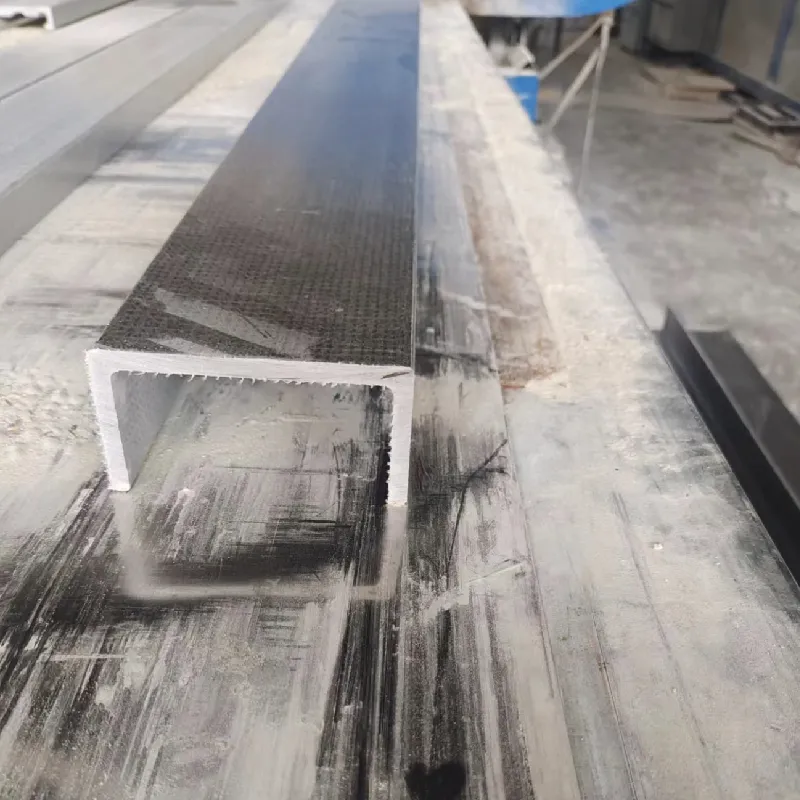loading...
- No. 9, Xingyuan South Street, Dongwaihuan Road, Zaoqiang County, Hengshui, Hebei, China
- admin@zjcomposites.com
- +86 15097380338
- Welcome to visit our website!
frp steel structure
FRP Steel Structures A Revolution in Construction Materials
In recent years, the construction industry has seen a significant shift towards innovative materials that enhance structural integrity while also addressing environmental sustainability. Among these advancements, Fiber-Reinforced Polymer (FRP) composites have emerged as a game-changer, particularly when integrated with traditional steel structures. This article delves into the characteristics, benefits, and applications of FRP in steel structures, showcasing its potential to revolutionize modern construction.
Understanding FRP and Its Composition
Fiber-Reinforced Polymer is a composite material made by combining a polymer matrix with fibers, such as glass, carbon, or aramid. The fibers provide strength and stiffness, while the polymer matrix protects them and binds the composite together. This combination results in a lightweight material that exhibits superior strength-to-weight ratios compared to traditional materials like steel and concrete. When used in conjunction with steel frameworks, FRP can significantly enhance overall performance.
Key Benefits of FRP Steel Structures
1. Corrosion Resistance One of the foremost advantages of FRP is its exceptional resistance to corrosion. Steel structures are often susceptible to rust and degradation, particularly in harsh environments. Integrating FRP components can mitigate these risks, extending the lifespan of the structure and reducing maintenance costs.
2. Lightweight Design The lightweight nature of FRP allows for easier handling and installation. This characteristic is particularly advantageous in seismic zones where lighter structures can reduce stress during earthquakes. Furthermore, less weight means that the foundation requirements can be reduced, resulting in cost savings.
3. Enhanced Flexibility and Strength FRP materials possess excellent tensile strength, allowing for greater flexibility in design. They can be molded and shaped to fit specific applications, providing engineers with more freedom in their design choices. This compatibility with steel means that complex geometries and configurations can be easily achieved without compromising structural integrity.
4. Environmental Considerations The production and disposal of traditional construction materials often present significant environmental challenges. FRP materials are typically less energy-intensive to produce and can be designed to be recyclable. By incorporating FRP into steel structures, builders can create greener, more sustainable construction practices.
frp steel structure

5. Thermal and Acoustic Insulation FRP provides better thermal insulation compared to traditional materials. This results in energy savings and improved comfort for occupants. Additionally, its sound-damping properties can enhance acoustic performance, particularly in multi-story buildings and industrial applications.
Applications of FRP in Steel Structures
The integration of FRP into steel structures has been successfully implemented in various applications, ranging from bridges to buildings
- Bridges FRP-reinforced steel bridges offer resilience against heavy traffic loads and environmental conditions. For example, the use of FRP in bridge decks can reduce overall weight while providing the necessary strength and durability. The corrosion resistance of FRP also extends the lifespan of these structures, resulting in lower maintenance expenditures.
- Building Construction In the realm of commercial and residential buildings, FRP can be utilized in beams, columns, and floor systems. This not only reduces the weight but also enhances the aesthetic appeal of buildings, as FRP can be produced in various colors and finishes.
- Industrial Applications In industries where exposure to chemicals and extreme conditions is prevalent, such as petrochemicals and coastal constructions, FRP steel structures help maintain the integrity and safety of installations. Their ability to withstand harsh environments makes them an ideal choice for storage tanks, pipelines, and other critical infrastructure.
Conclusion
As the construction industry continues to evolve, the incorporation of Fiber-Reinforced Polymers into steel structures represents a promising frontier. By combining the strengths of both materials, engineers and architects can design structures that are not only stronger and more resilient but also more sustainable. As awareness and technology surrounding FRP materials advance, we are likely to see a dramatic increase in their use across various sectors, ultimately leading to more innovative and environmentally friendly construction practices. The future of construction is undoubtedly shifting toward smart materials, and FRP steel structures are at the forefront of this exciting evolution.
-
The Rise of FRP Profiles: Strong, Lightweight, and Built to LastNewsJul.14,2025
-
SMC Panel Tanks: A Modern Water Storage Solution for All EnvironmentsNewsJul.14,2025
-
GRP Grating: A Modern Solution for Safe and Durable Access SystemsNewsJul.14,2025
-
Galvanized Steel Water Tanks: Durable, Reliable, and Ready for UseNewsJul.14,2025
-
FRP Mini Mesh Grating: The Safer, Smarter Flooring SolutionNewsJul.14,2025
-
Exploring FRP Vessels: Durable Solutions for Modern Fluid HandlingNewsJul.14,2025
-
GRP Structures: The Future of Lightweight, High-Performance EngineeringNewsJun.20,2025
